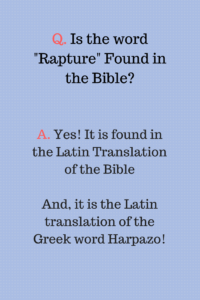Is Contemplative Prayer Biblical Prayer?
In 2 Corinthians 2:11, Paul takes it for granted that the Corinthians are “not ignorant of his (Satan’s) devices.” Sadly, a large portion of the church today appears to be vastly ignorant of Satan’s devices.
Deuteronomy 18:10-11 gives a list of occult or pagan practices which are an abomination to God. Many of these have been disguised by being given positive-sounding names or simply adding the word “Christian” to them such as “Christian Yoga” in effect producing “Christianized Abominations.” One such practice is called centering or contemplative prayer, which isn’t prayer at all, but mystical meditation
What is the Biblical definition of prayer?
There are a number of different words translated “pray” “praying” or “prayer” in the New Testament Greek. Many of which simply mean to make a request of either man or God. Two of these are “Eratao” and “Deomae.”
“Erotao” ἐρωτάω is a verb that simply means to ask, request, beg. It is used in passages such as Luke 5:3 “And he entered into one of the ships, which was Simon’s, and prayed him that he would thrust out a little from the land. And he sat down, and taught the people out of the ship.” (John 17:15; Acts 10:48; 1 John 5:16 and many others)
“Deomae” δέομαι is a verbal/gerund which means–wanting, desiring, asking, begging, beseech, make requests.” 2 Corinthians 8:4 “Praying us with much entreaty that we would receive the gift, and take upon us the fellowship of the ministering to the saints.“ (Galatians 4:12; Acts 8:22; 1 Thessalonians 3:10 and many others)
However, the next word, “Proseuche” προσευχή is a noun which actually means “a prayer addressed to God.” Romans 12:12 “Rejoicing in hope, patient in tribulation, continuing instant in prayer” (Luke 19:46; Acts 12:5; Philippians 4:6; and many others)
“Proseuchomai,” προσεύχομαι is a verb that means to offer up prayers (to God). Mark 11:24 “Therefore I say unto you, What things soever ye desire, when ye pray, believe that ye receive them, and ye shall have them.“ (James 5:13; Hebrews 13:18; 1 Timothy 2:8 and many others)
Characteristics of Biblical Prayer
The characteristics of scriptural prayer are as follows:
- Making requests directed to God. Philippians 4:6 “Be careful for nothing; but in everything by prayer and supplication with thanksgiving let your requests be made known unto God.“
- Using language and words. Matthew 6:9-13 (The Lord’s Prayer)
- Your desires, your mind, your thoughts, etc. 1 John 5:14, 15 “And this is the confidence that we have in him, that, if we ask anything according to his will, he heareth us: And if we know that he hear us, whatsoever we ask, we know that we have the petitions that we desired of him.“
- Prayer is our communication to God. This is in contrast to reading, studying and meditating on God’s word, which is God speaking to us.
- Comparison of Biblical Prayer with Contemplative Prayer
| Biblical Prayer |
Centering / Contemplative Prayer
|
|
Makes Requests to God
|
Makes no Requests
|
| Uses the Mind, Desires and Conscious Thought | Conscious thoughts are considered undesirable |
|
Uses words to communicate our requests
|
A word or phrase is only used to eliminate thought
|
|
GOAL: To communicate with God, to express our needs and desires; and to receive an answer from God.
|
GOAL: To reach “The Silence” when all distracting thoughts are gone, a thin place where the spiritual barrier is the thinnest, where you can contemplate God with your soul NOT with your intellect.
|
